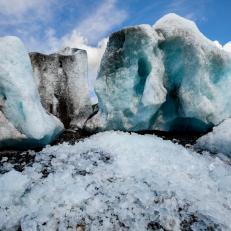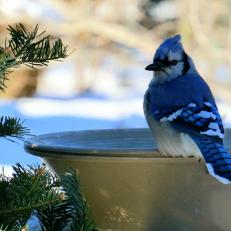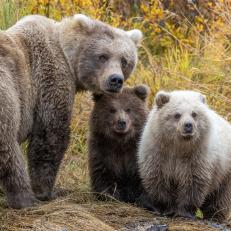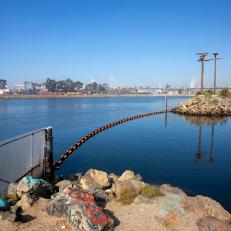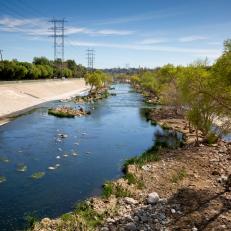Winter Frost Across the US
Winter is here. Nature photographers Ian Shive has some amazing icy shots from all over the world. Much like snowflakes, no frosted leaf is the same.

A hoary marmot stands upright surveying the land and park visitors as they hike the trails in Mount Rainier National Park, Washington. These rodents are named "hoary" because of their silver fur on their backs, which resembles a hoar frost. They typically live near the tree line, where trees end and rocks begin, and there is ample food for them. As our climate changes, these creatures are beginning to wake up from winter hibernation earlier and earlier, resulting in changes to their diet.
I was working closely with the U.S. Fish & Wildlife Service to document the far-reaches of Kenai National Wildlife Refuge, Alaska, when this image was made. We were traveling in a helicopter, moving across the Harding Icefield, when we crested a ridge, looking over into the other side of Kenai Peninsula. The shape, line and texture of the ice and glaciers surrounded by mountains provided for a very dramatic photograph. You can see how the glaciers and ice are moving, flowing down the valley like a river in slow motion.
Glacial ice, and the pools of water that form when it melts, appear blue from the enlarged ice crystals that exist from the extreme compression of the glacier. As a photographer traveling over them, they are extremely fun to photograph, but they are also a reminder of the constant change our planet is under from warming temperatures. This is the Tustumena Glacier in Kenai National Wildlife Refuge, Alaska.
A true icon, the American Bison is a powerful creature that should be respected from a distance. They lumber along slowly, but they can be fast and fierce. They are the perfect creature for the landscape of the American prairie, able to withstand the deep cold of winter. Photographed in Yellowstone National Park, Wyoming.
Yosemite Valley in Snow
This is one of my earliest compositions, when I was first experimenting with more abstract elements. This large tree, in Yosemite Valley in the national park of the same name, was covered in a thick snow and reminded me of an Ansel Adams image, a major inspiration to me. Believe it or not, this image is a color image, but the layer of snow mixing with the granite rock of the park created this inadvertently monotone image.
Three pronghorn search for food as the first snow of winter descends upon Yellowstone National Park, Wyoming. Often referred to as antelope, they are not actually antelope, though fill a similar niche in the ecosystem. They were first officially observed and described by the Lewis & Clark expedition, one of my earliest inspirations, which would influence me to one day explore the American west.
The Tustumena glacier in Kenai National Wildlife Refuge is in the heart of the refuge, an area given additional protections by the Wilderness Act. This glacier is part of the massive, 700 square mile Harding Icefield, which has as many as 40 glaciers like this reaching out from it's center. This glacier gives life to the refuge, its waters flowing down into the Kenai Peninsula, nurturing habitats for bears, salmon, caribou, trumpeter swans and many other creatures...and people.
The thick winter ice of Tustumena Lake in Kenai National Wildlife Refuge is the perfect subject for nature photography. The texture of the frost and cracks allowed me to focus on the unique shapes and compositional elements of the shoreline, while all around me the sounds of the twisting and shifting of the ice echoed on the silent landscape.
It was zero degrees, exactly, when I made this image. My fingers were frozen, fumbling around to mount my camera on my tripod, hoping for a magical sunrise in Grand Teton National Park, Wyoming. For a brief moment the clouds split and a sliver of golden light cut through, warming the mountains up just a bit, before it went back behind the thick layer of grey clouds that rolled in for the rest of the day, making the morning sacrifice that much more worth it.
This past winter I had the opportunity to visit Kenai National Wildlife Refuge, Alaska. The refuge is often referred as "Alaska in miniature" since it has a bit of everything that the rest of Alaska has...but this particular moment offered something I didn't expect. It was late winter, and the days were getting longer and warmer. The thick ice, which was thick enough to drive onto, was beginning to "sing." The warm sun would cause the ice to shift and twist, creating weird, primordial sounds loud enough to echo off the surrounding mountains and landscape.
Few people think of visiting Alaska in winter, but it is one of my favorite times to go. The sun doesn't rise very long, but what little bit of light there is, tends to be warm and magical, like a four hour sunset. On this particular trip, I had chartered an extremely small, two-seat airplane to try and photograph the Aleutian Mountain Range and Chigmit Mountains in this idea light. As we bounced along, snot freezing to my face, this moment lined up perfectly, the jagged peaks in the foreground framing Mount Iliamna, an active volcano, in the distance.
I was alone and most of Glacier National Park, Montana, had already been closed for the winter. Only the lower road was open, allowing visitors to trek to Lake McDonald, and on this particular evening, I was the only person there, surrounded by the immense silence, which was only broken by the occasional howl echoing on the wind. I set-up my camera to try and capture the magic of the moment, the bright stars of a Montana sky streaking across the Rocky Mountains as the last bit of light in the sky became deep blue.
A crevasse or break in glacial ice, is always a surreal site. They can be extremely deep, often thousands of feet or more, which means you always must be extremely careful when hiking on or near them. This crevasse was near the summit of Mount Rainier at around 13,000 feet in elevation, in Mount Rainier National Park, Washington. Most climbers attempt to summit a mountain in its warmest, mildest months, which is what I love about this image...the crevasse and mountain are in a deep, cold freeze but the valley behind in the background is experiencing the warmth of summer.
I'll never forget the first snow at Crater Lake National Park in Oregon. The lower roads were clear, but as me and my friends got higher and higher up the mountain, the world began to transform into a winter wonderland. It took longer than expected to get to the crater rim, and with the shorter days of winter, there was only a little bit of light left as we began to explore the trails. That's when this magical scene came together, a crescent of light touching the top of mountain giving a splash of color in an otherwise blue, cold and wintery evening.









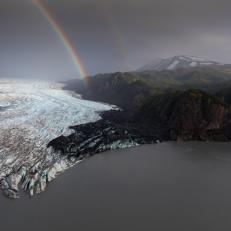
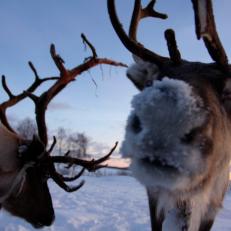
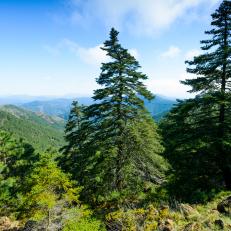
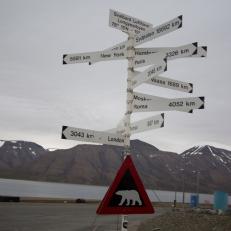
![108312270 Salzburg's famous old town and iconic Hohensalzburg fortress decorated for the Christmas holidays.
Please see my related collections...
[url=search/lightbox/7431206][img]http://i161.photobucket.com/albums/t218/dave9296/Lightbox_Vetta.jpg[/img][/url]
[url=search/lightbox/3521671][img]http://i161.photobucket.com/albums/t218/dave9296/Lightbox_Salzburg-V2.jpg[/img][/url]
[url=/search/lightbox/4780530][img]http://i161.photobucket.com/albums/t218/dave9296/Lightbox_santa_V2.jpg[/img][/url]
[url=search/lightbox/3521651][img]http://i161.photobucket.com/albums/t218/dave9296/Lightbox_alp_winter-V2.jpg[/img][/url]](http://discovery.sndimg.com/content/dam/images/discovery/fullset/2020/12/22/GettyImages-108312270.jpg.rend.hgtvcom.231.231.suffix/1608653200154.jpeg)

